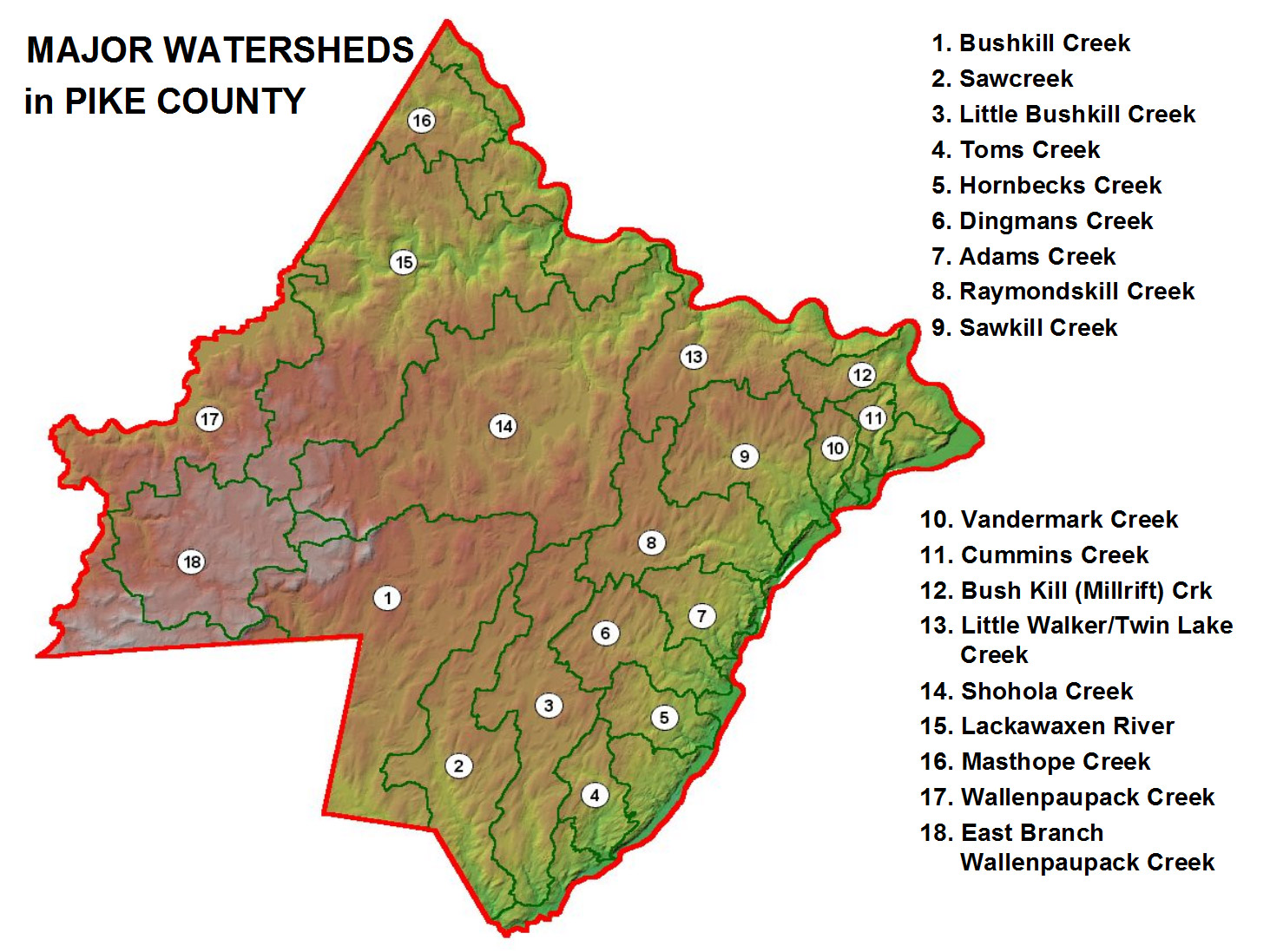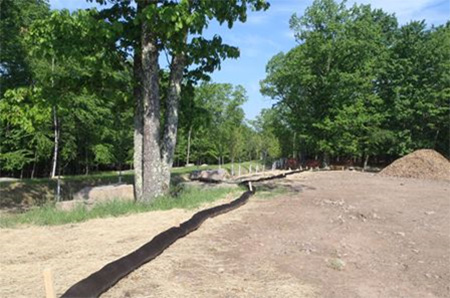
Erosion Control Plans with less than 1 acre of disturbance
Earth disturbance activities are regulated under PA DEP's Chapter 102 Regulations.
Chapter 102 requires that persons proposing or conducting earth disturbance develop, implement and maintain Erosion and Sediment (E&S) Control Best Management Practices (BMP's) to minimize erosion and the potential for pollution to water resources. In addition, under the Federal Clean Water Act, projects that have 1 acre or more of earth disturbance over the life of the project or part of a common plan of development may require an NPDES Permit for Stormwater Discharges Associated with Construction Activities. Examples of earth disturbance activities include, but are not limited to, commercial and residential development, timber harvesting, utility line installation and road maintenance and drainage improvements.
The Conservation District administers both Chapter 102 and NPDES programs in Pike County, including permit application and plan reviews, site inspections, complaint investigations and technical assistance. The District strongly recommends pre-application meetings early on during a project's concept plan stage — before detailed plans are developed — in order to determine whether an NPDES permit is required and to expedite the permit and plan review process.
Be sure to contact your municipality and/or your community association to check on any local ordinances or other restrictions that may apply to your project.
For projects with less than 1 acre of earth disturbance and not part of a common plan of development
- If you're unsure if your project is part of a common plan of development, review the FAQ resource from DEP here: Common Plan of Development or Sale NPDES Permits FAQ (PDF)
Erosion and Sediment control narrative and plan per Chapter 102 requirements. The District offers a Pike County Erosion and Sediment Control Small Projects Guide (PDF) for use if needed.
The PDF contains fillable form fields. Open with Adobe Reader and save. Download Adobe Reader if needed.
Resources to help develop an E&S Plan:
4 Steps to Using Web Soil Survey (PDF)
Before You Grade, Build, or Excavate Brochure
Completing an E&S Plan for Projects Less than 1 Acre (PDF)
DEP Erosion and Sediment Pollution Control Program Manual
Inspection Reports and Proper BMP Installation (PDF)
Sediment & Erosion Control Requirements for Agricultural Activities


We all live downstream. Our water quality is directly affected by our upstream neighbors, and our choices will impact the water quality for our downstream neighbors.
- Minimize impervious surfaces.
- Do not remove trees and other plants next to streams, lakes and wetlands.
- Plant native plants to absorb heavy rain falls.
- Direct rain gutters onto lawn or garden.
- Construct rain gardens and use rain barrels.

